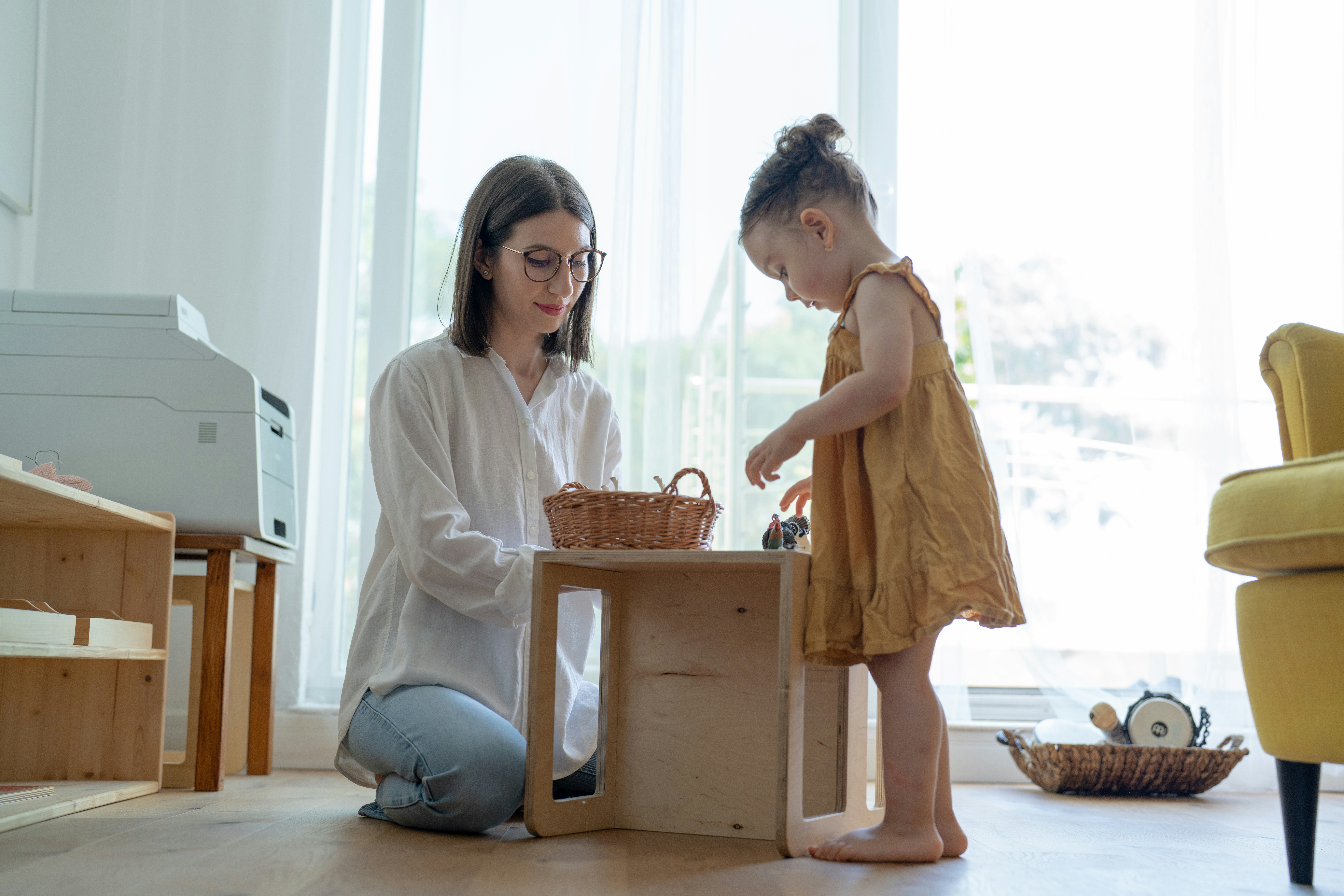Cultivating a sense of gratitude in children is crucial for their overall well-being and development. As parents, it is our responsibility to instill this valuable virtue in them from a young age. By incorporating simple yet effective activities into their daily routine, we can help nurture a mindset of appreciation and thankfulness. Here are 10 engaging and easy-to-implement activities that will teach your child the importance of gratitude in a fun and meaningful way.
Gratitude Journal
A gratitude journal is a powerful tool to help your child cultivate a sense of thankfulness and appreciation in their daily life. Encourage them to write down things they are grateful for regularly to reinforce a positive mindset and focus on the good things in their life.
Regular entries
There’s something transformative about the act of writing down things we are thankful for. Set aside time each day for your child to make regular entries in their gratitude journal. It could be before bedtime or in the morning as a way to start the day on a positive note.
Discuss highlights
For a more engaging experience, take the time to sit down with your child and discuss their journal entries. Ask them to highlight moments that brought them joy or made them feel grateful. This not only reinforces the habit of gratitude but also strengthens your bond through meaningful conversations.
You can use these discussions to explore deeper into why certain things made your child feel grateful. Understanding the reasons behind their gratitude can help them develop a greater sense of awareness and appreciation for the people and experiences in their life.
1. Start by modeling gratitude in your own daily actions.
2. Encourage your child to keep a gratitude journal.
3. Practice saying “thank you” often and show appreciation.
4. Volunteer and give back to those in need together.
5. Use gratitude prompts and questions during family discussions.
6. Encourage small acts of kindness to promote gratitude.
Thank-You Notes
Write together
Even at a young age, children can learn the importance of expressing gratitude through thank-you notes. Set aside time to write thank-you notes together after receiving gifts or acts of kindness. This activity not only teaches them to acknowledge the thoughtfulness of others but also improves their writing skills and creativity.
Send often
It’s crucial to send thank-you notes promptly to reinforce the habit of gratitude. Encourage your child to send thank-you notes as soon as possible after receiving a gift or kind gesture. Sending thank-you notes often will show appreciation and teach the value of expressing gratitude in a timely manner.
Sending thank-you notes frequently will not only make the recipient feel appreciated but also reinforce the importance of expressing gratitude consistently. It’s a simple yet powerful way to instill a sense of thankfulness in your child’s everyday life.
Gratitude Jar
Add daily
The key to instilling a sense of gratitude in your child is consistency. One simple way to do this is by incorporating a daily ritual of adding to a gratitude jar. Each day, encourage your child to write down one thing they are grateful for on a small piece of paper and place it in the jar. This practice helps them focus on the positive aspects of their day and appreciate the good things in life.
Share weekly
For the ‘Share weekly’ activity, set a specific day each week where your child can read aloud a few notes from the gratitude jar. This not only reinforces the habit of gratitude but also allows your child to practice verbalizing their appreciation. It can be a special bonding moment for the whole family as everyone takes turns sharing what they are thankful for that week.
Any age-appropriate variation of this activity can be used for different age groups, such as drawing a picture instead of writing, to make it engaging for younger children. The key is to make it a consistent and enjoyable experience that fosters a sense of gratitude in your child.

Volunteer Together
All parents want to instill gratitude in their children, and one powerful way to do this is by volunteering together as a family. Not only does volunteering teach children the value of helping others, but it also exposes them to different perspectives and situations that can increase their sense of gratitude.
Community service
Clearly, engaging in community service activities as a family can have a profound impact on your child’s understanding of gratitude. Whether it’s serving meals at a local shelter, participating in a beach clean-up, or helping out at a senior center, these experiences can help children see the world through a more compassionate lens.
Reflect afterwards
Reflecting on the volunteering experience afterwards is crucial to deepen the impact on your child. Take the time to discuss how the volunteering made them feel, what they learned from the experience, and how they can continue to show gratitude in their daily lives. Reflecting together will reinforce the importance of giving back and appreciating what they have.
To truly teach your child to be more grateful, it’s necessary to not only engage in volunteer activities but also to take the time to reflect on those experiences. By volunteering together and then reflecting on the impact of those activities, you can help your child develop a genuine sense of gratitude that will stay with them for a lifetime.
Compliment Others
Practice sincerity
One of the imperative ways to teach your child to be more grateful is by encouraging them to compliment others genuinely. Teach your child to look for positive traits in others and express their appreciation honestly. By practicing sincerity in their compliments, your child will learn to value kindness and positivity in their interactions with others.
Encourage kindness
Assuming the best in others is a powerful way to encourage kindness in your child. Teach them to approach every interaction with a positive mindset and to believe in the innate goodness of people. By fostering this attitude, your child will be more likely to spread kindness and positivity in their words and actions towards others.
Kindness is a trait that can be cultivated through practice and encouragement. Encourage your child to actively seek out opportunities to help others, whether it’s a simple act of holding the door open or offering a kind word to a classmate. By making kindness a priority in their daily interactions, your child will develop a genuine appreciation for the impact of their actions on others, leading to a more grateful and empathetic outlook on life.
Gratitude Conversation Starters
Dinner Discussions
Dinner time can be a perfect opportunity to instill gratitude in your child. Start by asking questions like, “What was the best part of your day?” or “What are you thankful for today?” Encourage your child to think about the positive aspects of their day and express appreciation for them. This practice can help them develop a habit of focusing on the good things in their life.
Share Feelings
Even young children can benefit from sharing their feelings and expressing gratitude. Encourage your child to talk about how certain actions or events made them feel. For example, ask them, “How did it feel when your friend shared their toy with you?” This can help them recognize and appreciate the kindness of others, reinforcing the value of gratitude.
Any opportunity to discuss emotions and gratitude with your child is valuable. By consistently engaging in these conversations, you are helping them build emotional intelligence and empathy. Encourage them to identify and express their feelings, as well as recognize and appreciate the kindness of others. These skills will not only nurture gratitude but also strengthen their relationships with others.
Gratitude Tree
Create visually
On this activity, you will create a Gratitude Tree to help your child visually see the things they are thankful for. You can draw a tree outline on a large piece of paper or use a real branch and place it in a vase for a more natural look.
Add leaves
Now, encourage your child to write or draw things they are grateful for on paper leaves. They can then attach these leaves to the tree branches. This visual representation will serve as a daily reminder of the blessings in their life.
For instance, your child can write down that they are thankful for their family, friends, pets, favorite toys, or even simple things like the sunshine or a good book. Adding leaves to the tree regularly will help your child cultivate a habit of gratitude.
Role-Model Behavior
Exhibit thankfulness
There’s no better way to teach your child to be grateful than by demonstrating gratitude yourself. Make a conscious effort to exhibit thankfulness in your daily interactions. Whether it’s saying ‘thank you’ to the cashier at the grocery store or showing appreciation for a kind gesture, let your child see how important gratitude is in your life.
Acknowledge politeness
With each polite gesture your child makes, take the time to acknowledge and praise their behavior. When they say ‘please’ or ‘thank you,’ be sure to respond positively, reinforcing the importance of manners and gratitude. This positive reinforcement will encourage them to continue their polite behavior in the future.
Behavior
As a parent, you have a powerful influence on your child’s behavior. By consistently exhibiting thankfulness and acknowledging politeness, you are setting a strong example for your child to follow. Recall, children learn best by observing the behavior of those around them, so be the role model of gratitude that you want your child to become.
Bedtime Gratitude Ritual
Many parents want to instill a sense of gratitude in their children from a young age. One effective way to achieve this is by incorporating a bedtime gratitude ritual into your nightly routine.
Reflect nightly
Ritual reflection before bedtime can help children learn to appreciate the good things in their day. Encourage your child to recall three things they are grateful for each night before they go to sleep. This simple practice can help shift their focus from what they don’t have to what they do have, fostering a sense of gratitude and contentment.
Positive thoughts
Each night, guide your child to think positively about their day. Ask them to share something positive that happened, no matter how small. By focusing on the positives, children can develop a more optimistic outlook and cultivate gratitude for the good things in their lives.
Plus, this practice can help improve their overall well-being and mindset, setting them up for a more positive and grateful attitude as they navigate through life’s challenges.
Story Time Discussions
Read books
While reading books to your child, choose stories that emphasize the value of gratitude. Look for books that have characters expressing thankfulness or facing situations that highlight the importance of being grateful. This will help instill the concept of gratitude in your child from a young age.
Discuss lessons
One effective way to teach your child about gratitude during story time is to have discussions about the lessons learned from the book. Ask questions like, “How do you think the character felt when they were thanked?” or “Why do you think the character was grateful for that gesture?” These discussions will encourage your child to reflect on the story and understand the impact of gratitude on others.
For instance, you could talk about how saying “thank you” when receiving a gift or a compliment can make the other person feel appreciated. By reinforcing this idea through story time discussions, your child will learn to apply gratitude in their own interactions with others.
To wrap up
So, teaching your child to be more grateful through simple activities is not only possible but also beneficial for their overall well-being. By incorporating gratitude practices into their daily routine, such as keeping a gratitude journal or volunteering as a family, you can help instill a sense of appreciation and empathy in your child. Be mindful of, gratitude is a powerful tool that can lead to a happier and more fulfilling life, so start implementing these activities today to help your child cultivate a mindset of gratitude.
FAQ
Q: Why is teaching gratitude important for children?
A: Teaching gratitude to children helps foster a positive attitude, empathy, and better relationships with others. It also promotes resilience and emotional well-being.
Q: What are some simple activities to teach children about gratitude?
A: Some simple activities include keeping a gratitude journal, writing thank you notes, volunteering in the community, creating a gratitude jar, and discussing what they are thankful for during meal times.
Q: How can parents encourage gratitude in their children on a daily basis?
A: Parents can encourage gratitude by modeling thankful behavior, pointing out acts of kindness, praising their children for showing appreciation, and incorporating gratitude into daily routines and conversations.




